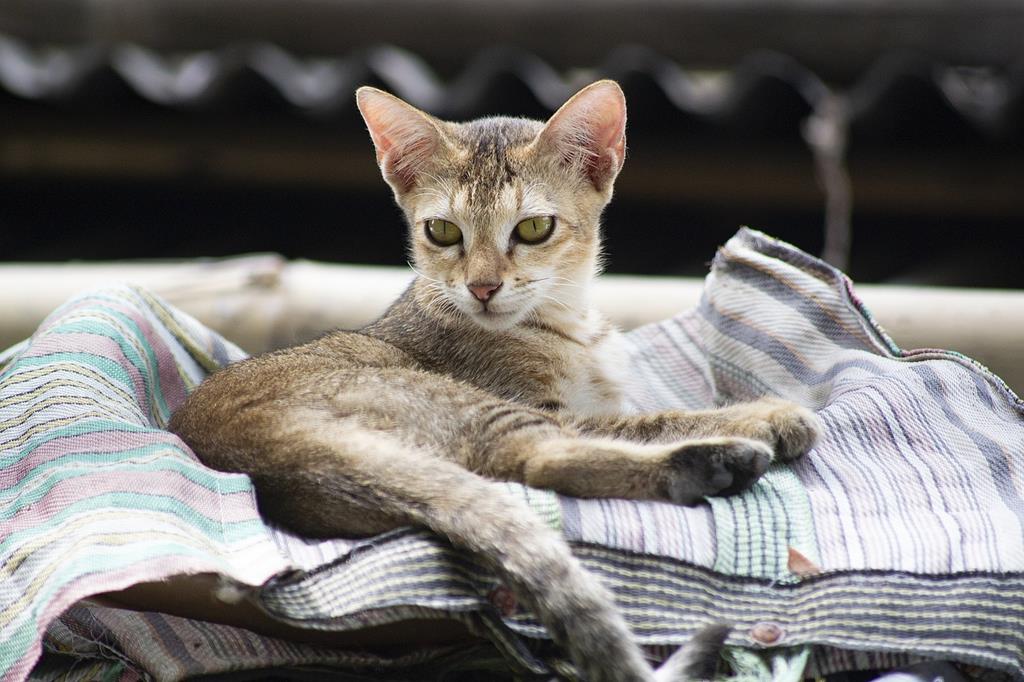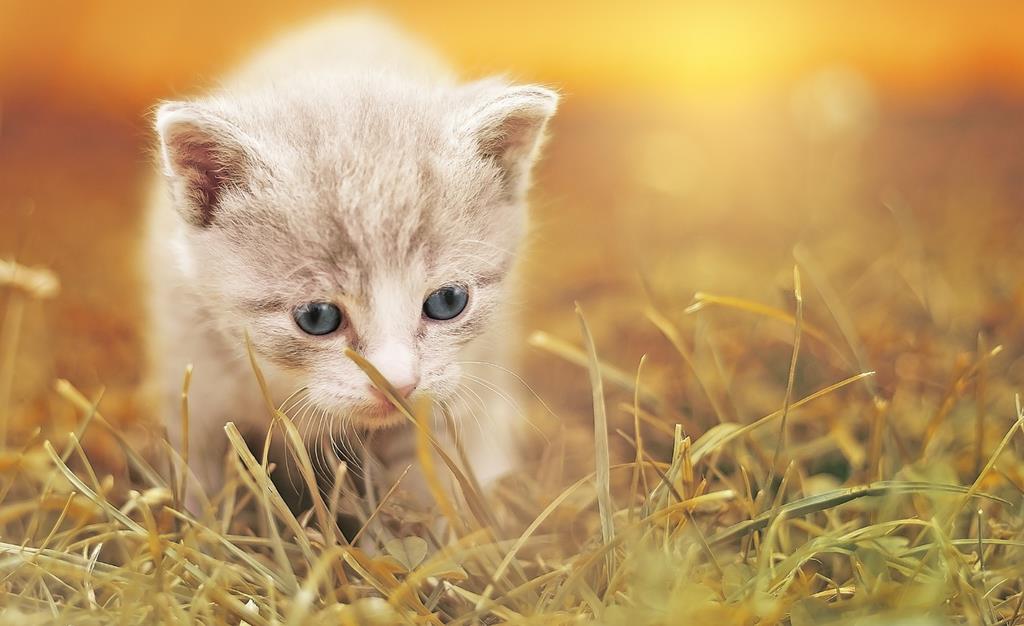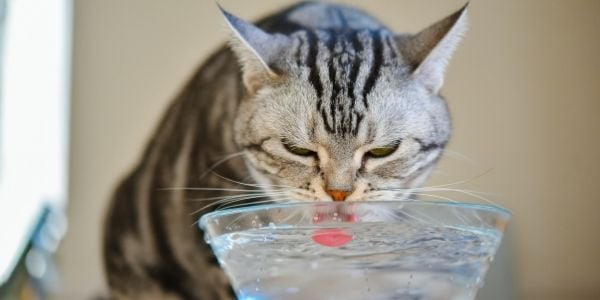Mold in a cat water fountain poses a health risk to pets. Regular cleaning prevents mold growth and ensures safe drinking water.
Mold can thrive in cat water fountains due to the constant moisture and presence of organic material such as saliva and food particles. A clean water fountain is vital for your cat’s hydration and overall well-being. Pet owners need to be vigilant about maintaining their feline friends’ water sources, as mold exposure can lead to respiratory problems and other health issues in cats.
The key to preventing mold is routine maintenance, which includes regular cleaning and changing of filters. Adopting these simple habits can protect your cat from harmful bacteria and maintain the longevity of the water fountain. Utilizing antimicrobial materials or additives designed for pet fountains can also help keep the water fresh and mold-free. Keeping your cat’s water fountain clean is an essential aspect of responsible pet ownership.

Credit: www.amazon.com
The Risks Of Mold In Cat Water Fountains
When we offer our feline friends water fountains, we aim for fresh, clean hydration. Yet, mold in these fountains poses a silent threat. Understanding the risks and types of mold that can thrive in cat water fountains is the first step to protecting our pets. Here, we delve into why mold is harmful and what specific types lurk in household water sources.
Health Hazards Of Mold Exposure For Cats
Mold exposure can harm cats just as it can humans. The following points illuminate the dangers:
- Respiratory troubles: Mold can lead to coughing, wheezing, or asthma.
- Allergic reactions: Cats may suffer from sneezing, itchy eyes, or skin rashes.
- Digestive issues: Ingesting mold can cause vomiting or diarrhea.
- Weaker immunity: Mold exposure can suppress the immune system.
Stay alert for these signs. Spotting them early keeps cats safe.
Common Types Of Mold In Household Water Sources
Household water can harbor several mold varieties. Here’s a quick look:
| Mold Type | Description | Color |
|---|---|---|
| Aspergillus | Common, can cause infections | Green or black |
| Cladosporium | Can grow in cool areas | Brown or black |
| Penicillium | Spreads easily, causes allergies | Blue or green |
Regular cleaning and maintenance of cat water fountains is critical to prevent these molds.
Identifying Mold Contamination In Feline Watering Solutions
Keeping your cat’s hydration station clean and safe is crucial for their health. Mold in cat water fountains can pose a risk to your feline friends. It’s essential to identify and address mold contamination swiftly to maintain a healthy environment for your pets. Knowing what signs to look for and how to distinguish dangerous molds from harmless discolorations are the first steps in protecting your cat against these unseen threats. Let’s delve into spotting mold growth and understanding its impact on cat water fountains.
Signs Of Mold Growth In Cat Water Fountains
Be on the lookout for these indicators of mold growth:
- Fuzzy or slimy spots on surfaces or filters.
- Discolorations that can range from black, green, or white patches.
- A musty odor often signals hidden mold.
- Recurring sickness in your cat might be mold related.
Distinguishing Harmful Molds From Benign Discoloration
Not all spots and stains in a cat’s water fountain are cause for concern. Determine what requires your attention:
| Color | Texture | Action |
|---|---|---|
| Black or green | Fuzzy or slimy | These may signify harmful mold. Clean immediately. |
| White or clear | Hard or crystalline | Often benign mineral deposits. Monitor and clean as needed. |
When unsure, err on the side of caution and thoroughly clean the fountain. Always use cat-safe cleaning products or solutions when addressing these issues.
Preventive Measures To Keep Water Fountains Mold-free
Mold in cat water fountains is not just unsightly but can also be harmful to your pet’s health. Ensuring your cat’s water fountain remains mold-free requires proactive measures and a clear understanding of best practices. By focusing on material choice and regular maintenance, cat owners can significantly reduce the risk of mold growth. Let’s dive into the strategies for keeping your cat’s water fountain pristine and safe.
Choosing The Right Fountain Materials
The fight against mold starts with selecting the proper materials for your cat’s water fountain. Certain materials harbor mold less than others. Bold choices include stainless steel and ceramic. These non-porous surfaces resist mold growth effectively. They are also easy to clean and don’t develop scratches easily, which can harbor mold spores.
- Stainless Steel: Durable, rust-resistant, and often dishwasher-safe.
- Ceramic: Heavy, stable, and comes in many stylish designs.
Regular Cleaning Protocols To Mitigate Mold
Consistent and thorough cleaning is critical to preventing mold. Establish a regular cleaning schedule based on the type of fountain and usage. Ideally, clean the fountain at least once a week with hot, soapy water. For optimal results, follow this step-by-step guide:
- Disconnect the fountain and disassemble all components.
- Scrub parts with a soft brush or sponge to remove debris.
- Rinse components thoroughly under running water.
- Use a vinegar solution for a natural disinfectant rinse.
- Air-dry the fountain before reassembling and refilling with fresh water.
Don’t forget to replace filters as recommended by the manufacturer, as they can be a breeding ground for mold if left unchecked.

Credit: www.paskapoopetservices.com
Step-by-step Guide To Cleaning Your Cat’s Water Fountain
Keeping your cat’s water fountain free from mold is crucial for their health. Follow this easy guide to ensure your furry friend’s hydration source is safe and clean.
Disassembling And Sanitizing Components
Start by unplugging the fountain and emptying the water. Remove all parts according to the manufacturer’s instructions. Use a soft brush or sponge to scrub each component.
- Detach the fountain’s bowl and housing.
- Extract the pump and filter for separate cleaning.
- Clean the fountain’s motors and spouts gently.
Soak parts in a mix of hot water and vinegar for deep sanitization.
Natural Cleaning Agents Vs. Chemical Products
Natural cleaners like vinegar or baking soda are safe for cats and the environment. They remove mold and prevent its return effectively.
| Natural Agent | Usage |
|---|---|
| Vinegar | Dilute with water for a non-toxic rinse. |
| Baking Soda | Use as a paste to scrub tough grime. |
For stubborn mold, hydrogen peroxide acts as a stronger but safe alternative.
- Avoid bleach and harsh chemicals that can harm your cat.
- Always rinse thoroughly to prevent residue.
Advanced Solutions For Mold Management
Your furry friend’s health is paramount, and keeping their water fountain mold-free is crucial. We explore advanced strategies for combating mold. These solutions bring together the best of technology and safe practices to ensure your cat’s hydration source remains pristine.
Technological Innovations In Cat Water Fountains
New advancements make fountains smarter and more resilient against mold. Innovative designs feature:
- Automated cleaning cycles that help prevent mold growth.
- Materials like stainless steel or ceramic that resist mold better than plastics.
- UV-C light technology that eliminates bacteria and mold spores on contact.
These smart fountains not only keep water fresh but also notify you when cleaning is needed.
Implementing Safe Water Additives And Filters
Pairing technological innovation with safe additives can further protect your cat’s water. Examples include:
| Additive/Filter | Purpose | Benefits |
|---|---|---|
| Charcoal filters | Trap impurities | Keeps water clean |
| Enzymatic additives | Break down organic matter | Prevents mold formation |
| Silver ion cartridges | Destroy bacteria | Maintains water hygiene |
Filters and additives should be cat-friendly and regularly replaced as per instructions. This ensures continuous protection against harmful contaminants.
Recognizing When To Replace Your Cat’s Fountain
Caring for your purring friend includes maintaining their hydration station – not just refilling but knowing when it’s time for a new cat water fountain. Scrutinizing your current setup is vital for your cat’s health. Let’s dive into the details.
Lifespan Of Different Fountain Models
Just like other household appliances, cat water fountains have varied lifespans. These depend on materials, use, and maintenance.
| Material | Expected Lifespan |
|---|---|
| Plastic | 1-2 years |
| Stainless Steel | 2-4 years |
| Ceramic | 3-5 years |
Remember, these are estimates and actual lifespan can vary. Regular maintenance can extend these periods.
Warning Signs That Demand Fountain Replacement
Stay vigilant for signs that your cat’s water fountain is on its last legs.
- Strange Noises: Pumps should be quiet. Loud sounds mean trouble.
- Decreased Water Flow: If water trickles out, the pump might be failing.
- Frequent Filter Changes: Filters wearing out too quickly is a red flag.
- Visible Wear or Damage: Cracks and wear compromise fountain integrity.
- Consistent Cleanliness Issues: Difficulty keeping the fountain clean signals it’s time for a change.
Your cat deserves fresh, clean water. Heed these warning signs to ensure they always have it.
:max_bytes(150000):strip_icc()/the-best-running-water-bowls-and-fountains-to-help-your-cats-stay-hydrated-lead-1122-c7c00b9b574b47c88c07e6e2da8484a0.jpg)
Credit: www.marthastewart.com
Frequently Asked Questions For Mold In Cat Water Fountain
Can Mold Make My Cat Sick?
Mold exposure can indeed be harmful to cats, potentially leading to respiratory issues or gastrointestinal problems. Keeping their water fountain clean is essential for their health.
How Often Should I Clean My Cat’s Water Fountain?
Regular cleaning, ideally once a week, is recommended to prevent mold growth. Replace the water daily and inspect the fountain for any signs of mold or slime.
What Causes Mold In Cat Water Fountains?
Mold in cat water fountains can result from a combination of stagnant water, organic material, and warm temperatures. Infrequent cleaning contributes to the problem.
Which Are The Best Cat Water Fountains To Avoid Mold?
Water fountains with few crevices, made of stainless steel or ceramic, are less prone to mold. Choose designs that are also easy to disassemble and clean.
Conclusion
Keeping your cat’s water fountain mold-free is paramount for their health and hydration. Regular cleaning and maintenance prevent harmful bacteria growth. Opt for products designed for easy cleaning. Remember, a clean fountain means a happy, healthy feline! Check our guide for more tips on proper care.



